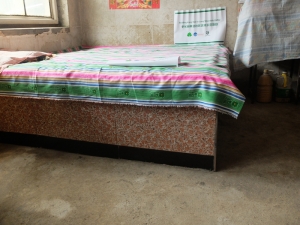Expecting a Warmer and Energy-Efficient Winter
- 2015-10-21 14:25:00
- admin Original
- 2842
In July 2015, 5 Kang beds in the Changyugou part (the literal translation being Long Mountain Valley) of Shichangyu village, Miyun County of Beijing, were built to reduce the energy consumption of the respective families and raise their livelihood standards by improving the heating in the cold winters in the region. This was part of a larger initiative to transform Shichangyu into an eco-tourism hotspot and restore Long Mountain Valley’s natural vegetation. Beijing Forestry Society and CISabroad pooled together their funds to help the local villagers to have a warmer winter later this year.
The most important natural filters of water are the surrounding forests in the Miyun Reservoir Watershed. Keeping the forests healthy requires for the people living right next to them to have sufficient livelihoods. If their energy consumption, especially in form of fuelwood, is too high, the forest regeneration, which forms the next generation of the forests there and the first generation of natural secondary forests, will disappear or be heavily impaired.
Based on previous experiences Kang beds can reduce fuelwood use by an average of 36% (or 850 kg) per bed per year, representing a cost saving of RMB 1,170 or US$172. The energy-efficient Kang beds also generate more heat (about 1-2° during the cold winter months), as well as reducing reliance on local indigenous fuelwood species and increasing the use of farm waste (mainly corn cobs). A particularly interesting measurement has been the reduction in carbon dioxide emissions that has resulted from more efficient energy use.

